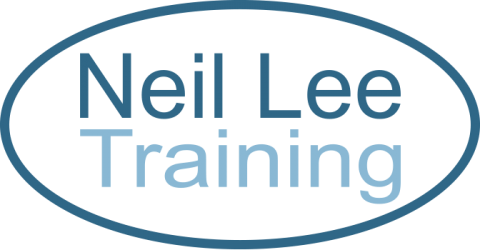Part 1 - Useful Acronyms
The Training Mix:
A- Attitude
S- Skills
K- Knowledge
bjection Handling:
A- Acknowledge
P- Probe
A- Answer
C- Confirm
Honey & Mumford Learning Styles:
P- Pragmatist
A- Activist
R- Reflector
T- Theorist
Instructing:
E- Explain
D- Demonstrate
I- Imitate/ Instruct
P- Practice
Sensory Learning Styles:
V- Visual
A- Auditory
R- Read/ Write
K- Kinaesthetic
Part 2 - Sensory Learning Styles (VARK) Visual Learners
Nobody uses one of the styles exclusively, and usually most participants have a significant overlap in styles.
Visual Learners will learn most effectively when complex information is presented to them using diagrams, symbols and visual representation.
Are neat and orderly
Speak quickly
Are good long-range planners and organisers
Are observant of environmental detail
Are appearance orientated in both dress and presentation
Remember what was seen, rather than heard
Memorise by visual association
Usually are not distracted by noise
Need an overall view and purpose and are cautious until mentally clear about an issue or project
Doodle during phone conversations and meetings
Forget to relay verbal messages to others
Often know what to say but can’t think of the words
Part 3 - Sensory Learning Styles (VARK) - Auditory Learners
Nobody uses one of the styles exclusively, and usually most participants have a significant overlap in styles.
Auditory Learners will relate most effectively to the spoken word. They will tend to listen to a lecture, and then take notes afterwards, or rely on printed notes. often information written down will have little meaning untill it has been heard – it may help auditory learners to read written information out loud.
Auditory learners may be sophisticated speakers, and may specialise effectively in subjects like law and politics.
Learn by listening, and remember what was discussed rather than seen
Speak in rhythmic patterns
Talk to themselves while working
Are easily distracted by noise
Move their lips and pronounce the words they read
Enjoy reading aloud and listening
Can repeat back and mimic tone, pitch and timbre
Find writing difficult, but are better at telling
Are frequently eloquent speakers
Are talkative, love discussion, and go into lengthy descriptions
Have problems with projects that involve visualisation
Can spell better out loud than in writing
Part 4 - Sensory Learning Styles (VARK) - Read/Write Learners
Read/ write learners relate most effectively to in-depth written information.
Typically they will be unhappy with a presentation where they are unable to take detailed notes – to an extent information does not exist for a read/write learner unless it has been seen written down. This is why some read/write learners will take notes even when they have printed course notes on the desk.
Are good spellers and can actually see the words in their minds
Are strong, fast readers
Would rather read than be read to
Find writing and re-writing helpful when learning information
Are often the people who read manuals and instructions
May forget verbal instructions unless they’re written down
Like to read information before they hear about it
Need plenty of opportunity and time to write extensively
Like lots of detail in their information
Like lists with clear headings
Part 5 - Sensory Learning Styles (VARK) Kinasthetic Learners
Kinaesthetic learners learn effectively through touch, movement and space, and learn skills by imitation and practice.
Predominantly kinaesthetic learners can appear slower at learning, in that information is normally not presented in a style that suits their learning methods.
Learn by manipulating and doing
Want to act things out
Speak slowly
Touch people to get their attention
Stand close when talking to someone
Are physically orientated and move and gesture a lot
Memorise by walking and seeing
Can’t sit still for long periods of time
Can’t remember geography unless they’ve actually been there
Use action words
Like plot-oriented books – they reflect action with body movement as they read
May have messy handwriting
Like involved games
Part 6 - Psychological Styles (Honey & Mumford) - Activists
Activists involve themselves fully and without bias in new experiences. They enjoy the here and now and are happy to be dominated by immediate experiences. They are open-minded, not sceptical, and this tends to make them enthusiastic about anything new.
Their philosophy is ‘I’ll try anything once’. They tend to act first and consider the consequences afterwards. Their days are filled with activity. They tackle problems by brainstorming. As soon as the excitement from one activity has died down they are busy looking for the next.
They tend to thrive on the challenge of new experiences but are bored with implementation and longer term consolidation. They are gregarious people constantly involving themselves with others but in doing so; they seek to centre all activities around themselves.
Typical characteristics:
Flexible
Get bored with consolidation
Happy to give things a try
Open minded
Optimistic about change
Rush into action without preparation
Takes immediate obvious action
Takes unnecessary risks
Unlikely to resist change
Tendency to do too much for themselves
Part 7 - Psychological Styles (Honey & Mumford) - Reflectors
Reflectors like to stand back to ponder experiences and observe them from many different perspectives. They collect data, both first hand and from others and prefer to think about it thoroughly before action. Analysis of data about experiences and events is what counts so they tend to postpone reaching definitive conclusions for as long as possible.
Their philosophy is to be cautious. They are thoughtful people who like to consider all possible angles and implications before making a move. They prefer to take a back seat in meetings and discussions. They enjoy observing other people in action. They listen to others and get the drift of the discussion before making their own points. They tend to adopt a low profile and have a slightly distant, tolerant and unruffled air about them.
When they act it is part of a wide picture which includes the past as well as the present and others’ observations as well as their own.
Typical characteristics:
Careful
Good listener
Hold back from participation
Methodical
Dont jump to conclusions
Thorough & thoughtful
Part 8 - Psychological States (Honey & Mumford) Theorists
Theorists adapt and integrate observations into complex but logically sound theories. They think problems through in a vertical, step by step logical way. They assimilate disparate facts into coherent theories. They tend to be perfectionists who wont rest easy untill things are tidy and fit into a rational scheme.
They like to analyse and synthesise. They are keen on basic assumptions, theories, models and system thinking. Their philosophy prizes rationality and logic; “if it’s logical it’s good”. Questions they frequently ask are “Does it make sense”, “How does it fit with that”, “What are the basic assumptions”? They tend to be detached, analytical and dedicated to rational objectivity rather than anything subjective or ambiguous.
Their approach to problems is consistently logical. This is their mental set and they rigidly reject anything that doesn’t fit with it. They prefer to maximise certainty and feel uncomfortable with subjective judgements, lateral thinking and anything flippant.
Typical characteristics:
Disciplined
Intolerant of subjective, intuitive ideas
Logical
Low tolerance of uncertainty and ambiguity
Objective
Parental in approach
Probing when questioning
Rational
Restricted in lateral thought
Part 9 - Psychological Styles (Honey & Mumford) - Pragmatists
Pragmatists are keen on trying out ideas, theories and techniques to see if they work in practice. They positively search out new ideas and take the first opportunity to experiment with applications. They are the sort of people who return from management courses brimming with new ideas that they want to try out in practice. They like to get on with things and act quickly and confidently on ideas that attract them. They tend to be impatient with ruminating and open-ended discussions.
They are essentially practical, down to earth people who like making practical decisions and solving problems. They respond to problems and opportunities ‘as a challenge’. Their philosophy is ‘there is always a better way’ and ‘If it works it’s good’.
Typical characteristics:
Businesslike – gets to the point
Does not like “theory”
Impatient with waffle
Keen to test things out in practice
Practical, down to earth, realistic
Rejects ideas without clear application
Seize first, often obvious solution
Task focus
Technique focus
On balance task not people orientated

